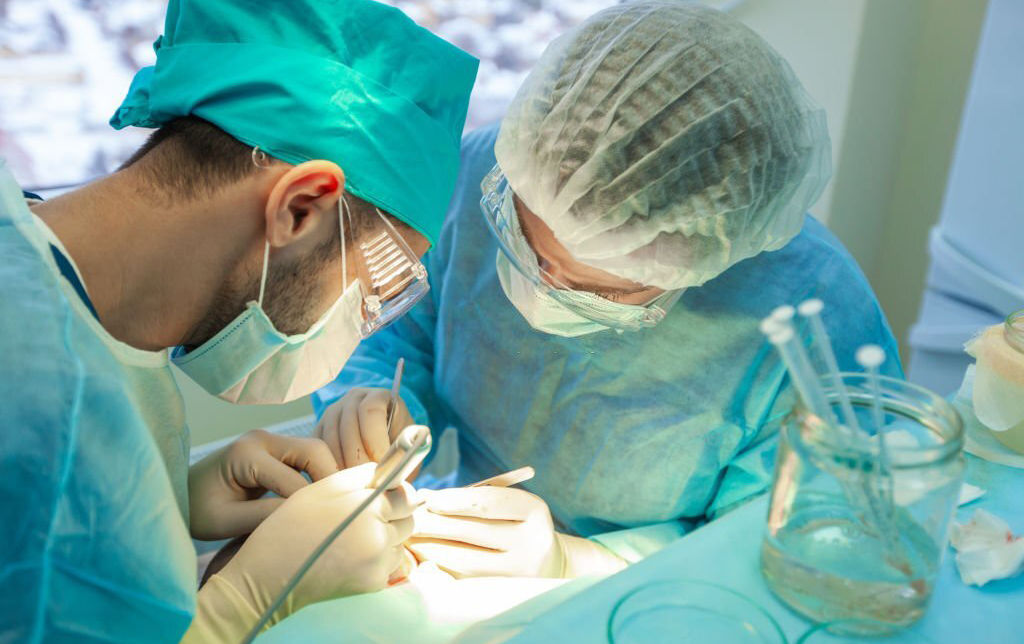Blogs

Why Breast Reconstruction Matters: A Comprehensive Guide
Breast reconstruction is a vital aspect of recovery for many women following a mastectomy or breast-conserving surgery due to breast cancer. The significance of breasts extends beyond their physical presence; they are deeply intertwined with femininity, self-perception, and psychological well-being. This blog explores the aims, types, and considerations involved in breast reconstruction, highlighting its role in restoring both physical appearance and emotional health.
Understanding the Importance of Breast Reconstruction
Breasts are not just a physical characteristic but a profound symbol of femininity and identity. Following breast cancer surgery, whether a mastectomy or breast-conserving procedure, the physical and psychological impacts can be substantial. Breast reconstruction plays a crucial role in helping women regain their sense of wholeness and femininity. It aims to recreate a breast that looks natural and is in harmony with the patient’s body, which can significantly enhance self-esteem and body image.
Aims of Breast Reconstruction
The primary goal of breast reconstruction is to achieve symmetry and a natural appearance. The process is not focused on a specific shape or volume but on creating breasts that complement the patient’s overall body. Achieving a symmetrical ptotic conus—an aesthetically pleasing and natural shape—on the breast footprint is a key objective. This artful approach ensures that the reconstructed breast appears as natural as possible, thereby improving the patient’s body image and emotional well-being.
Indications for Breast Reconstruction
Breast reconstruction is indicated in various scenarios:
- Mastectomy for Breast Cancer: After the complete removal of breast tissue due to cancer, reconstruction helps restore the breast’s appearance and enhance the patient’s sense of normalcy.
- Breast-Conserving Surgery for Breast Cancer: Procedures like lumpectomy or segmental mastectomy involve removing only the tumor and some surrounding tissue. Reconstruction can address any resulting deformities and improve the overall appearance of the breast.
Timing of Breast Reconstruction
Breast reconstruction can be performed at different times relative to cancer treatment:
– Delayed Reconstruction: This approach involves waiting until all cancer treatments, such as chemotherapy and radiotherapy, are completed. Benefits include:
– Certainty About Cancer Clearance: Ensuring that the cancer is fully treated before proceeding with reconstruction.
– Completion of Adjuvant Therapy: Allowing the patient to finish necessary treatments that could impact the reconstructed breast.
– Adjustment Period: Providing time for the patient to adapt to life without a breast and consider reconstructive options.
– Less Surgical Time: Avoiding the extensive surgery of mastectomy and reconstruction in one session.
– Consideration Time: Allowing for thorough evaluation of reconstructive options and their risks.
– Primary Reconstruction: Also known as immediate reconstruction, this is performed during the mastectomy. It offers:
– One-Stage Procedure: Reconstruction when much of the breast skin envelope and inframammary fold (IMF) can be preserved.
– Psychological Benefits: Helping to mitigate the emotional impact of mastectomy by avoiding a period without a breast.
– Immediate Delayed Reconstruction: This hybrid approach involves placing an expander during the mastectomy to maintain a subcutaneous cavity for future implant or tissue reconstruction. It is suitable for patients who may require additional therapy like radiotherapy.
Types of Breast Reconstruction
Breast reconstruction can be broadly categorized into three main types:
- Autologous Tissue Reconstruction: Uses the patient’s own tissue, taken from other body parts, to reconstruct the breast. Common techniques include:
– Latissimus Dorsi Flap: Uses muscle, skin, and fat from the upper back.
– TRAM Flap (Transverse Rectus Abdominis Myocutaneous Flap): Utilizes tissue from the lower abdomen.
– DIEP Flap (Deep Inferior Epigastric Artery Perforator Flap): Uses skin and fat from the lower abdomen while preserving abdominal muscle.
– SGAP Flap (Superior Gluteal Artery Perforator Flap) and IGAP Flap (Inferior Gluteal Artery Perforator Flap): Uses tissue from the buttocks.
– TUG Flap (Transverse Upper Gracilis Flap): Uses tissue from the inner thigh.
- Implant-Based Reconstruction: Involves the use of silicone or saline implants to recreate the breast mound. This method is less invasive and typically involves a shorter recovery time.
- Combination of Autologous Tissue and Implants: Combines both techniques to achieve the desired breast shape and volume, often used when there is insufficient tissue from one site alone.
Flap Options for Breast Reconstruction
Specific flaps used in autologous tissue reconstruction include:
– Latissimus Dorsi Flap: Reliable but may cause back muscle weakness.
– Pedicled TRAM Flap: Provides a large amount of tissue but can weaken the abdominal wall.
– Free TRAM Flap: Similar to the pedicled TRAM flap but uses microsurgery to reconnect blood vessels, reducing abdominal wall weakness.
– DIEP Flap: Spares the muscle, offering a natural look but requires intricate microsurgery.
– SGAP and IGAP Flaps: Useful for patients lacking abdominal tissue, though more technically demanding.
– TUG Flap: Provides good contour and texture from the inner thigh.
Complications of Breast Reconstruction
As with any surgery, breast reconstruction carries potential risks:
– Blood Loss: Significant bleeding may occur, requiring transfusions or additional interventions.
– Infection: Surgical site infections can delay healing.
– Necrosis: Death of tissue due to inadequate blood supply, particularly in flap procedures.
– Hematoma: Accumulation of blood requiring drainage.
– Seroma: Fluid collection at the surgical site, often needing drainage.
Breast reconstruction is a sophisticated and essential procedure aimed at restoring the breast’s appearance after mastectomy or breast-conserving surgery. It plays a critical role in the emotional and psychological recovery of breast cancer patients by reestablishing a sense of femininity and body integrity. With options ranging from autologous tissue reconstruction to implants and combinations thereof, each patient can find a tailored solution that best suits her needs and preferences. Despite the risks, advancements in reconstructive techniques offer hope and improved outcomes for many women facing breast cancer.
Popular Posts

Nose Surgery (Rhinoplasty)
Nose reshaping (rhinoplasty or a "nose job") is an operation to change the shape or size of the nose...

Best Hair Transplant Doctor In Nagpur Location
Saundarya City Uses Modern techniques have enabled advanced methods for surgical hair transplants that can help restore lost hair...



 Book an Appointment
Book an Appointment